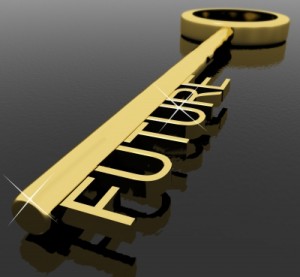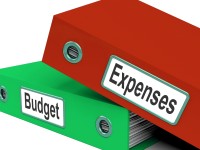When I started planning in 2009 for a financially independent retirement, I was very clear about one thing. For me, this was all about time. About shortening as much as possible the time I would have to spend in a daily commute-and-work grind. About freeing as much of the time I had left on this Earth — which is limited for all of us — to do what I wanted to do and not what somebody else assigned me to do.
When I started this journey in 2009, I had “perceived” personal annual expenses of $33,280. Now, 4 years later, I am FREE… free with yearly personal basic living expenses of $15,000 net of income taxes.
It was my focus on the overriding priority and importance of time over other considerations that got me free. I reasoned that if this was about time then it was not about accumulating (or holding onto) unnecessary things… or about keeping up with the neighbors… or about indulging in lots of optional cost-ridden activities. And what I did to stay focused was to specifically and clearly separate and keep track of my basic living costs and the costs of my wants — in writing and frequently. By doing this, I was able to so lower my financial freedom budget — AND accelerate the growth of my stash — that 4 years later I had reached my goal in January 2013. My time is now mine (and I actually have ended up with plenty of “extra” income to fund lots and lots of “wants”).
The real key, though, is a mental one. I had to learn to tell the difference between needs and wants, which is not necessarily that obvious in our consuming-driven society. It was and is vital that I not mix and mingle — that I not confuse — my basic costs of living with the price tags for my discretionary toys and playtimes. Recognizing and acting on the difference cut years and years off my working life, and made attaining financial freedom much much more doable.
A vehicle or a status symbol? I need a reliable pick-up truck for a vehicle, and I have one in a paid-for 1996 Dodge Dakota that I’ve kept in great shape. Recognizing that I do not need to trade it in for a newer $30,000 truck (even if I wanted one) has kept my basic living expenses from increasing by at least $3000 a year — and saved me from having had to work an extra two years to accumulate the capital required to fund that $3000-a-year expense.
A newer truck or two more years of my remaining life lived in financial freedom? For me, it’s a no-brainer. How about for you?
A house to live in or to show off? I need a modest-sized house (1500 square feet for 2) with a garage and a workshop on a couple of acres or so (because I learned the hard way I need to not have in-your-lap next door neighbors). But in 2009 my wife and I owned a much larger house in a suburban community plus a 100-acre vacation property. At best, we used (needed) half the space in the house; the other half we just wanted for show. The vacation property we obviously did not need at all, and ended up wanting to visit it less than 12 days a year. An unexamined financial picture had kept us tied to both those places. Four years later, we’ve sold both properties and used the profits to acquire mortgage-free the right-sized house we really need in a more rural setting that’s also more pleasing to us. Recognizing that we did not need the bigger house or the occasionally used vacation property reduced my basic living expenses by $8500 a year — and saved me from having to work an extra five-and-a-half years to accumulate the capital required to fund that $8500-a-year expense.
A bigger house or five-and-a-half more years of my remaining life lived in financial freedom? To me that’s also a no-brainer. How about you? And so it goes for me, even with the smaller expenses.
Basic need or optional want? I no longer have a mortgage. I do need to spend money on groceries, medical and other insurances of many types, utilities, truck operation and maintenance, property maintenance and taxes, pet care, investment fees, and income taxes. After a year of judicious cost-cutting that did not require giving anything up, I was able to cut the total of those costs by another $3000 a year. And that saved me from having had to work another extra two years to accumulate the capital required to fund that $3000.
Unexamined living costs or two more years of my remaining life lived in financial freedom? Another no-brainer as far as I’m concerned. What do you think?
I can now cover all my basic living expenses on $15,000 (net) a year and still have a jolly good time enjoying my freedom to hike, bike, canoe, read, blog, movie watch, video game, listen to classical music, and more.
If I want to have even more fun, I’ll spend more money — other money — on civil war tour trips, national park camping trips, eating at restaurants, snow birding in Florida for the winter, driving off into the country, tackling home or truck improvement projects, and whatever else may strike my fancy. But I am crystal clear that these are all wants. The money I spend on them is separate from what it costs me to meet my basic living expenses. I don’t need the wants. And I don’t let them morph into needs — or even quasi-needs — by letting them slip into my baseline living expense calculations or budget.
Even though my passive income is more than 3 times $15,000 a year, it gives me a tremendous sense of control and peace of mind to truly recognize that my personal baseline living expenses are $15,000 a year. The rest of my money spending is optional, discretionary, for fun and unnecessary. So I keep it separate — and pay for it out of a discretionary FUND — in order not to confuse myself into thinking that I actually need a lot more than $15,000 a year to be financially independent.
Have you thought of looking at it that way? How much income do you really, really need to declare yourself financially independent and start living free?
# # # # #
image courtesy of Stuart Miles at FreeDigitalPhotos.net








I am in a similiar situation I am trying to work through. We have a vacation property we own that I have had on the market for 3 years . we use to use the property at least 20x’s a year and now use once the weekend of the 4rth. Though we own it out right My taxes are still 3k a year and carring costs, maintance etc…its costing me 10k a year. The problem is 4-5 years ago I could of easily sold for 4-450k and now I have listed for 324k (started per realtor at 449k and cant sell. Do I just dump it and keep dropping price? I dont need the money but I also dont know what the price will be to sell it. Once that sells we want to sell our main residence 450-550k with 9k taxes which we own and once all done we have been looking at small ranches in the 250k range of taxes 3-3500 a year. This will save us a fortune and the kids can give up some goodies for a year or two till the older 2 are gone. I feel right now I am stuck till something gives on the vacation property…..but I am in line with what you did.
Douglas,
I think you’ve answered your own question.
You say you will save a fortune once you’ve switched out of your primary home. But you make it sound like you are putting that switch off until you do sell your second property. So, how badly do you want to switch primary homes? If you want that badly enough, and the second property is an obstacle, don’t you think you should go ahead and remove the obstacle?
Just saying!!